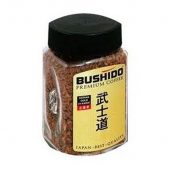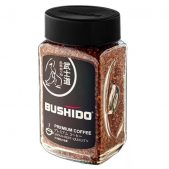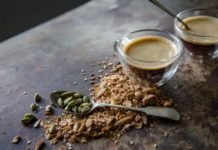The world market is replete with a variety of coffee brands and their products. Bushido coffee stands out among them. In just a few years, a drink popular all over the world has won the sympathy of many coffee lovers around the world. What exactly is this product famous for?
Material Content:
Bushido coffee - brand history
The history of Bushido coffee dates back to the late 90s in Japan. He appeared in Russia and European countries recently and immediately gained popularity with local coffee lovers. Noting how much furor their products produce, enterprising Japanese decided to enter new world markets.
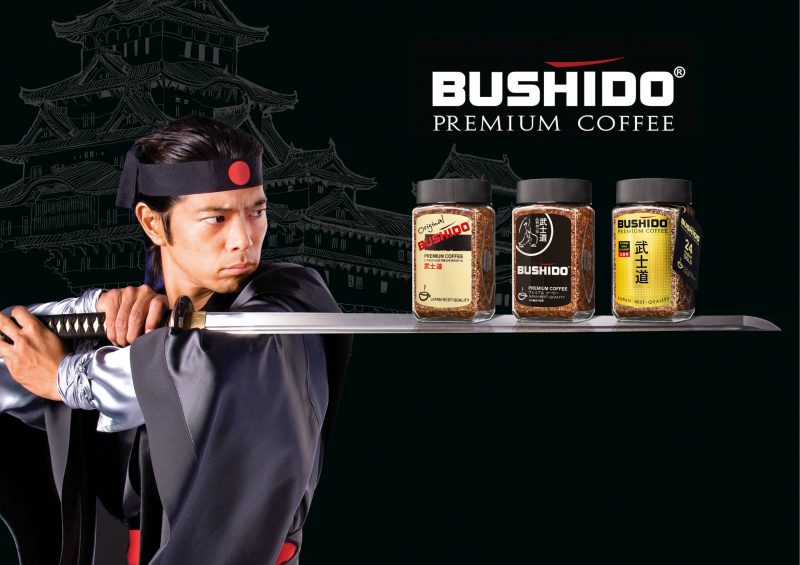
Gradually, the Swiss partners of the Bushido firm became the Swiss. Today it is in Switzerland that the central production of goods has been established.
The beginning of the 2000s for Bushido was marked by the appearance of ground and grain coffee. In 2012, the line of this brand expanded with new unique varieties of products.
Types of instant coffee and their description
The famous coffee is available in various variations. Types of Bushido coffee:
- "Red Katana." It is a first-class freeze-dried coffee. Its composition includes only high-quality arabica, flavored with a unique mixture of Paranaguay native to African plantations. The taste of coffee is original and quite saturated, has a bright aroma and a long finish. Customers can buy the product in glass jars of 50 or 100 g. This variety of the drink is recognized as the leader in sales, as in soluble form it has a slightly different flavor, which does not mix the smell of rancid grains.
- "Black Katana." Natural coffee, based on a coffee mixture called Vera Cruz, which is collected on plantations in South and Central Asia.This coffee is prepared by dark roasting and is considered quite strong. The taste of the drink is balanced, has a tart, bitter aftertaste. Distinguish from the classic look of apparent sourness. Persistent coffee aroma does not disappear after cooling the drink. Many buyers are sure that this coffee is not at all similar to ordinary instant coffee and equate it to drinks brewed in a cezve and a coffee machine.
- Light Katana. Premium instant coffee. It is made from Kenivaro arabica brought from Kilimanjaro. The beans are fried in a unique way, which makes the coffee taste velvety and soft, it feels fruity notes. This coffee is good as a standalone drink and can do without additional cream or sugar.
- "Katana Gold 24 carats." Premium coffee made from high-quality Arabica varieties harvested on the slopes of Kilimanjaro. Superfine edible gold is added to it. It is assumed that it is endowed with mystical properties and helps rejuvenate the body, as well as increase life expectancy. Elite coffee is rich and strong, the grains succumbed to a high degree of roasting. Initially, the drink was extremely popular in Japan, but eventually spread throughout the world. Coffee is very aromatic even when it cools down.
- Coffee "Bushido Kodo". Another representative of the famous Japanese coffee line, which is considered to be a "multicoffee". Arabica, brought from Tanzania, Ethiopia, and South America, is combined under a glass jar lid. Grains for the product are collected exclusively by hand and dried on a high plateau. This representative of the house "Bushido" combines both ground and instant coffee in a ratio of 20/80.
Bushido ground and beans
In 2000, Bushido began to produce grain and ground coffee.
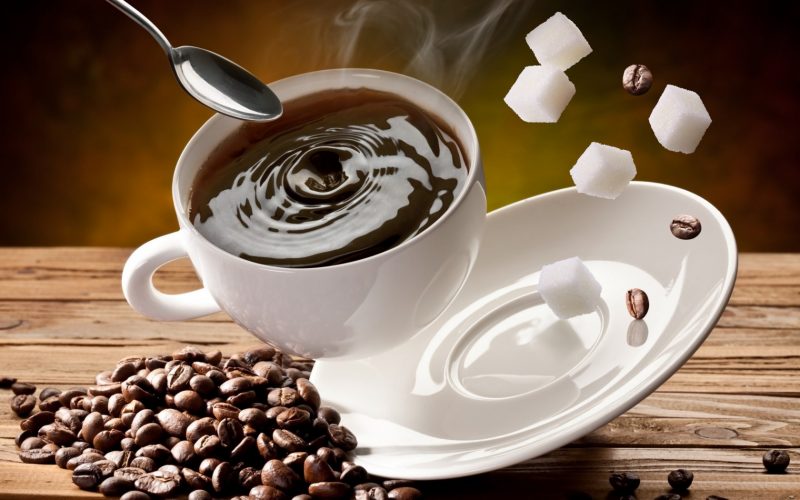
The company is known for its tough selection of coffee beans, which should be collected only on elite plantations. Raw materials are constantly tested for environmental friendliness.
Roasting is carried out under the supervision of craftsmen who continuously monitor the process. The machines here perform only mechanical rough work.
The method of cooling the roasted Bushido beans is considered unusual since it is produced by the anhydrous method. To do this, use natural alpine alpine air.
There are two varieties of Bushido coffee beans: Specialty and Original.
- The first is marked by a bright aroma and aftertaste.
- "Bushido" The original is less strong and gives a caramel and chocolate notes.
The raw material consists of a combination of boiled robusta and arabica, belongs to the Premium category. Selected coffee is made from a mixture of Buenaventure, collected in the vastness of South America. The grains are subjected to an average degree of roasting, before which they are sorted, and this process includes 15 stages. The raw material is elite arabica, collected on certain plantations subject to a number of conditions.
The recipe for coffee "Bushido"
And if you are a fan of Bushido products, then you will be interested to know that you can make such coffee not only in the traditional way.
Instant coffee "Bushido"
Prepared by the following technology:
- Pour 1 - 2 tsp of coffee into a cup.
- Add hot boiled water (not boiling water!). The water temperature should be 85 - 95 degrees.
- Insist a drink for several minutes and, if desired, season with cinnamon.
Coffee beans Bushido
Before preparing a fragrant drink, coffee beans from Bushido should be carefully ground. This should be done immediately before cooking to maximize the preservation of a delicate aroma.
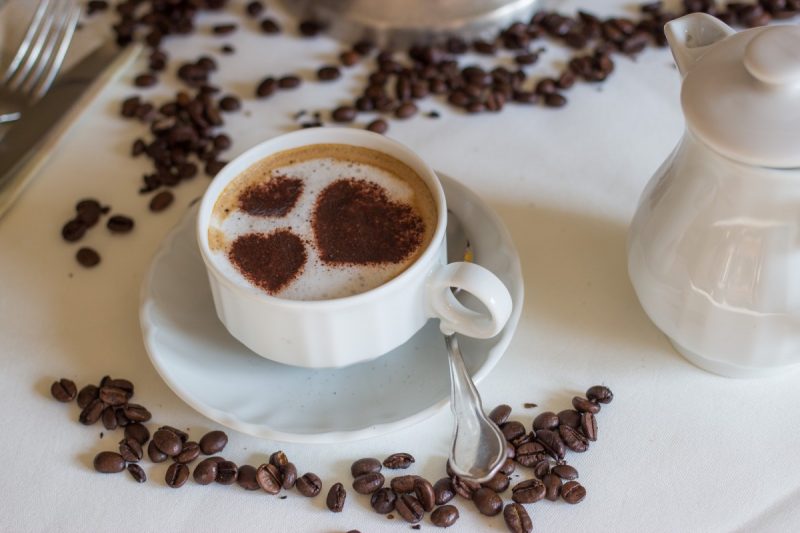
The classic way to make ground grains involves a cezve. First of all, they put it on a small fire and heat it. Ideally, coffee is prepared in the sand, but for lack of it, a stove is also suitable.
The cooking steps are as follows:
- Pour a full teaspoon of coffee into the turk, add nutmeg, cinnamon or ginger.
- Pour the mixture with water and mix thoroughly.
- Heat the liquid to 90 degrees. When the first bubbles appear, remove the cezve from the fire.
- Cool the drink a bit, send it back to the stove and heat to the same temperature. Repeat the procedure several times.
- Before removal, mix coffee for the last time in the process of boiling and put on fire again for 10 seconds.
Coffee is considered ready. It should be poured into heated cups.
Ground coffee
Ground coffee "Bushido" is acceptable to brew both in cezve and in an ordinary cup.
Prepare it as follows:
- Pour 2 tsp into a standard cup. coffee.
- Immediately add the preferred amount of sugar.
- Boil water, pour coffee powder on it.
- The cup must be covered with a lid or saucer (preferably metal). Otherwise, the temperature of the drink drops quickly and the coffee does not have time to brew.
- Let the drink brew for 3 minutes, remove the lid and enjoy the result.
How much is Bushido coffee
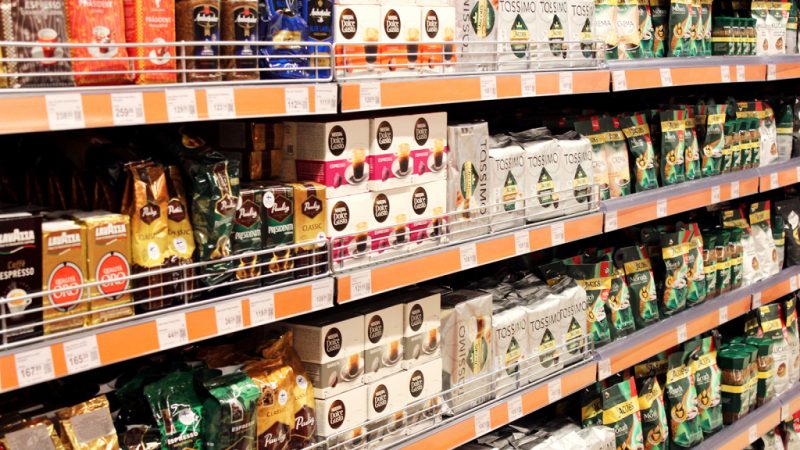
Soluble products are sold in glass jars of 50 g each. The cost of a small can varies between 300 rubles. You can buy a gram can for 400 - 600 rubles, while the Gold Katana will cost about 1200 rubles.
How to distinguish from a fake
Of course, all over the world there are many who want to try the legendary Bushido coffee. But there are also many who want to give their goods for the original Japanese coffee.
In order not to run into a fake when choosing products that position themselves as Bushido, you should pay attention to the following useful recommendations:
- The original product is available in glass jars with a special logo - bulk grain on the side.
- Counterfeiting is usually cheap. The price for real Bushido coffee starts from 300 r. for a small 50 gram jar.
- Most often, fakes are produced in transparent plastic jars. Bushido, which respects itself and customers, is packaged exclusively in glass containers.
- When buying, you should consider information details. The lack of a barcode, expiration dates and links to the country of origin should alert the buyer. You should not buy a product whose first 3 digits of the barcode do not coincide with the data of the producing country.
- Many fake products have distorted names in tune with the original. So, in the word "Bushido" the initial letter or several final letters can be changed.
Absolutely all representatives of the Bushido line have won great reviews from coffee connoisseurs. The product appealed to all lovers of strong drinks (the grain option is suitable) and to those who prefer weaker coffee (it is better to choose instant coffee). The price of the product will also pleasantly surprise connoisseurs, because the cost of Japanese coffee is very affordable for such a fairly high quality of raw materials.



